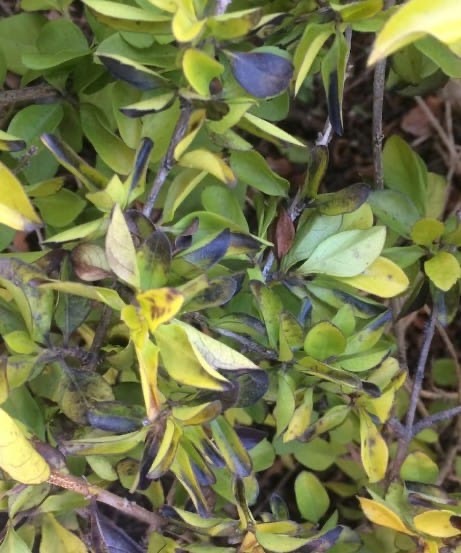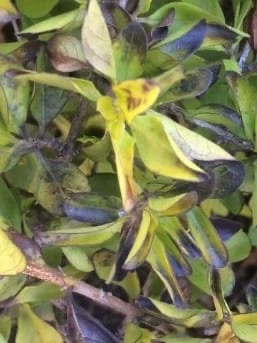Duranta Plant
Durantas, shrubs with fast growth, thrive in well-drained soil and full sun. With moderate moisture needs, Durantas are often cultivated for their ornamental flowers and berries.
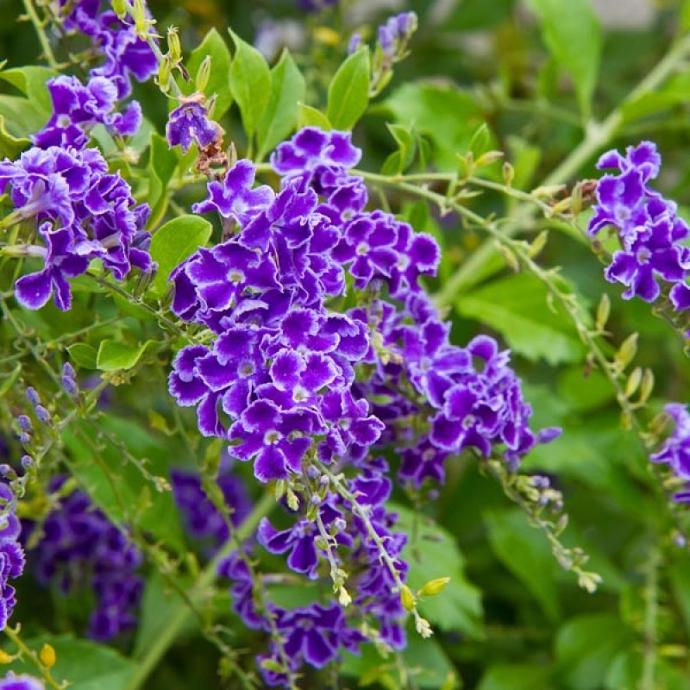
Habit
Shrub
Height
2 to 5 m
Growth
Fast
Soil
Well-drained, loamy soil
Shade
Full Sun
Moisture
Moderate
Edible
No
Medicinal
No
Origin
Americas
Climatic Condition
Tropical, Subtropical
Temperature (°)
20 to 35
Humidity (%)
50 to 80 %
Potting media
Garden soil
Fertilizers
Organic fertilizers
Watering
Moderate
Plant Weight
500-800 g
Flowering Time
Year-round
Soil Ph level
5.5 to 7.5
Water Ph level
6.0 to 7.0
Soil EC
0.4 to 1.5
Yield Per Plant
Ornamental plant
NPK ratio
10:10:10
life Span
Perennial
Health Benefits
Attracts butterflies, used as a hedge
Suggested Grow Media or Potting Mix ?
50% loamy soil, 30% compost, 20% sand
Suggested Fertigation/Fertilizers
Fertilize every 4 weeks with a balanced fertilizer.
Common Diseases and Remedies
leaf spot
black colour spots on basal portion of leaves.
neem oil , remove the infected part and bury them
What Is A Duranta ?
A Duranta plant, also known as Golden Dewdrop or Skyflower, is a tropical shrub or small tree native to the Americas and commonly cultivated for its attractive foliage and colorful berries. It features clusters of tubular flowers ranging from blue to purple, followed by golden or orange berries. Duranta plants are often used in landscaping as ornamental specimens or as hedges due to their vibrant appearance.
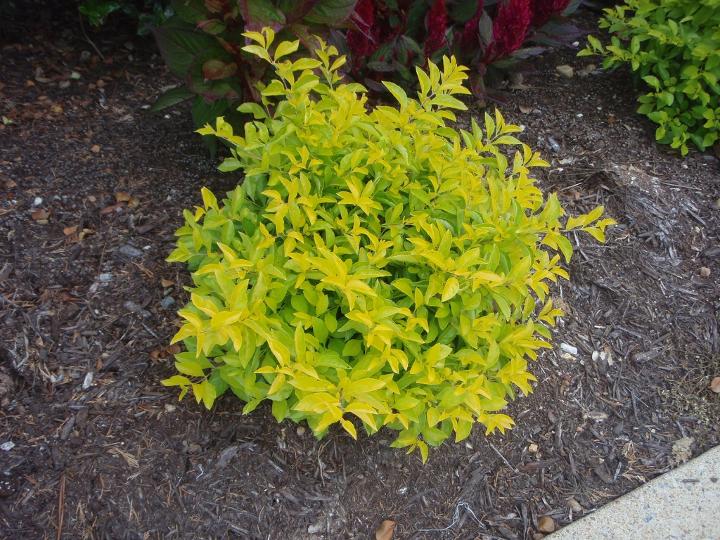
What are the different types of duranta plant?
There are several different types of Duranta plants, each with its own unique characteristics. Here are a few notable varieties:
1. Duranta erecta:-
Also known as Golden Dewdrop or Skyflower, this is the most common species. It features vibrant blue to purple flowers and golden berries, and it's widely used in landscaping for its ornamental appeal.
2. Duranta repens:-
This variety is similar to Duranta erecta but tends to have a more trailing or cascading growth habit. It's often used in hanging baskets or as a ground cover.
3. Duranta stenostachya:-
Known for its narrow leaves and upright growth habit, this species is sometimes called Brazilian Skyflower. It produces clusters of purple flowers and small orange berries.
4. Duranta 'Sapphire Showers':-
A cultivar of Duranta erecta, 'Sapphire Showers' is prized for its long, pendulous clusters of vibrant blue flowers. It can grow as a shrub or trained into a small tree.
5. Duranta 'Gold Mound':-
This cultivar is valued for its bright yellow-green foliage, which retains its color throughout the year. It produces occasional clusters of lavender flowers and golden berries.
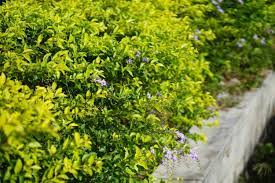
How to care for Duranta plant ?
1. Location:
Duranta plants thrive in warm, tropical climates and are best suited for outdoor cultivation in regions with mild winters. Here's a brief explanation of the ideal location for Duranta plants.
2. Sunshine:
Duranta plants thrive in locations with ample sunshine, making sunlight a crucial factor for their growth and flowering. Here's a brief explanation of the sunlight requirements for Duranta plant are (Full Sun to Partial Shade)Duranta plants prefer to be planted in areas that receive full sun to partial shade. They need at least 6 hours of direct sunlight each day to thrive and produce an abundance of flowers and berries.
3.Soil:
Duranta plants thrive in well-draining soil with a slightly acidic to neutral pH. Here's a brief explanation of the ideal soil conditions for Duranta plants , Well-Draining Soil , Choose a soil mix that provides good drainage to prevent waterlogging, as Duranta plants are susceptible to root rot in overly wet conditions. Sandy loam or loamy soil amended with perlite or coarse sand works well to improve drainage.
4.Hydration:
Hydration is crucial for the health and growth of Duranta plants. Here's a brief explanation of how to properly hydrate them, Consistent Moisture ,Keep the soil consistently moist but not waterlogged. Duranta plants prefer soil that is evenly moist, so water them whenever the top inch of soil feels dry to the touch.

5.Nourishment:
Nourishing Duranta plants with the right nutrients is essential for their growth, flowering, and overall health. Here's a brief explanation of how to provide proper nourishment , Balanced Fertilizer: Feed Duranta plants with a balanced, slow-release fertilizer formulated for flowering shrubs or general-purpose use. Choose a fertilizer with equal parts nitrogen, phosphorus, and potassium (N-P-K) to support overall growth and blooming.
6. Issues:
Duranta plants are susceptible to pests such as aphids, whiteflies, spider mites, and caterpillars. These pests can cause damage to the foliage, weaken the plant, and inhibit growth. Regular inspection and appropriate pest management techniques, such as insecticidal soap or neem oil applications, can help control infestations. Duranta plants are prone to fungal diseases such as powdery mildew, leaf spot, and root rot, especially in humid conditions or poorly drained soil. Symptoms may include white powdery spots on leaves, dark lesions, or wilting. Improving air circulation, avoiding overhead watering, and applying fungicidal treatments as needed can help prevent and manage fungal diseases.
What are the benefits of the duranta plant?
Ornamental Beauty
Versatility
Wildlife Attraction
Low Maintenance
Screening and Privacy
FAQS about growing duranta plant
1.What are the different varieties of duranta plant?
There are several different varieties of Duranta plants, each offering unique characteristics and visual appeal. Some common varieties include:
Duranta erecta (Golden Dewdrop) ,Duranta repens , Duranta stenostachya (Brazilian Skyflower) , Duranta 'Sapphire Showers' , Duranta 'Gold Mound'.
2.What are the ideal growing conditions for duranta plant?
The ideal growing conditions for Duranta plants include:
Sunlight
Temperature.
3.Are duranta plants toxic to pets or humans if ingested?
Yes, Duranta plants are considered toxic to both pets and humans if ingested. The berries of Duranta plants contain toxic compounds, including saponins, which can cause gastrointestinal upset, vomiting, diarrhea, and in severe cases, more serious symptoms such as difficulty breathing or seizures. It's important to keep Duranta plants out of reach of children and pets, and to discourage them from nibbling on the berries or other parts of the plant. If ingestion is suspected, it's best to contact a veterinarian or poison control center for guidance.
4.How do you propagate duranta plants , and what methods are most successful?
Duranta plants can be propagated through several methods, including seed propagation, stem cuttings, and layering. Here's how to propagate Duranta plants using stem cuttings, which is one of the most successful methods:
Selecting Cuttings , Preparing Cuttings , Planting Cuttings , Providing Humidity , Watering , Root Development , Transplanting.
5.What are some interesting facts or historical uses of duranta plants in different cultures or region?
Duranta plants have been utilized in various cultures and regions for both ornamental and practical purposes. Here are some interesting facts and historical uses: Ornamental Value , Medicinal Uses.
